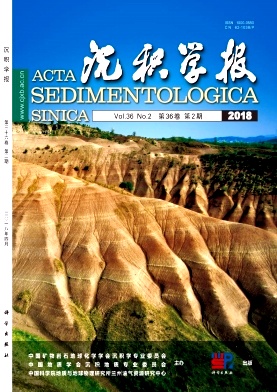Chroma Characteristics and Its Paleoclimatic Significance in Pamir Loess Section, China
doi: 10.14027/j.issn.1000-0550.2018.043
- Received Date: 2017-03-29
- Rev Recd Date: 2017-08-21
- Publish Date: 2018-04-10
-
Key words:
- chroma /
- magnetic susceptibility /
- loess-paleosol /
- Pamir
Abstract: Loess is one of the most detailed terrestrial widespread high resolution archives of climate and environment change, the study of the loess-paleosol sequences in Pamir allows one to assess the changes in the environment and pedogenesis over the interglacial and glacial epoch of the Quaternary period. However, deciphering such amount information requires multi-proxy to investigate the temporal process of aeolian dust and paleoclimate, which is important for understanding the forcing mechanisms of past climate in Pamir region and also for predicting the future regional climate changes under the global warming background. Soil color, one of the sensitive proxies for paleoclimate, has been widely used as an indicator of chemical and biological properties as well as the soil-forming process in the loess study. In view of above analysis, combined with magnetic susceptibility, calcium carbonate and organic matter proxies, this paper measured the chromatic proxies to investigate the spatial and temporal variations of soil color and their major controlling factors at the Pamir loess section dominated by westerlies. The results show that the introduction of chroma could compensate for defects in paleoclimate reconstruction when magnetic susceptibility cannot record the process of climate change and soil development well. In the process of loess accumulation, lightness L*, to a large extent, was dominated by color components a* and b*, furthermore, may be correlated to the substance that affect color component a*,b*. Redness a* and yellowness b* were controlled by the similar climatic factors and might process the consistent color material because of their relatively high correlation. Largely influenced by the categories and contents of iron oxide and correspond well with magnetic susceptibility, Redness a* could indirectly reflect the climate change and pedogenic environment in this region.The relationship between chromatic proxies and magnetic susceptibility indicate that magnetic susceptibility and a* show a positive correlation, for L* it is a negative one; this is due to the fact that their dominating matter is different. Only the combination between chromatic proxies and other climatic proxies, could we reconstruct a reasonable and reliable process of climate change in the Pamir region.
| Citation: | CHEN Jie, YANG TaiBao, ZENG Biao, HE Yi, JI Qin. Chroma Characteristics and Its Paleoclimatic Significance in Pamir Loess Section, China[J]. Acta Sedimentologica Sinica, 2018, 36(2): 333-342. doi: 10.14027/j.issn.1000-0550.2018.043 |






 DownLoad:
DownLoad: